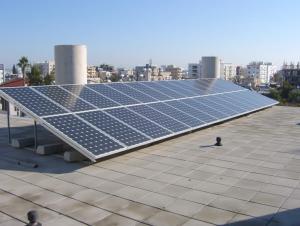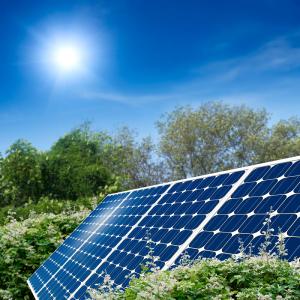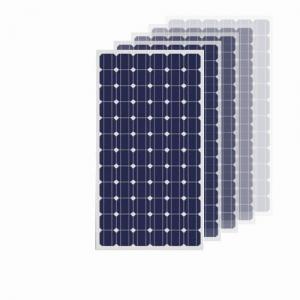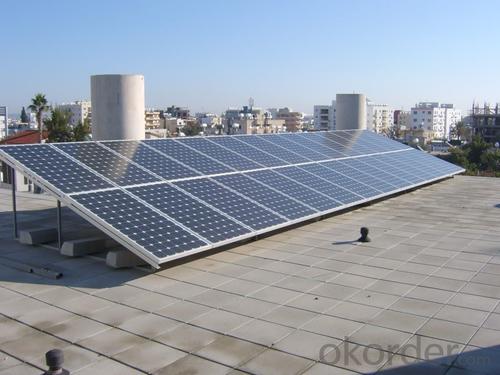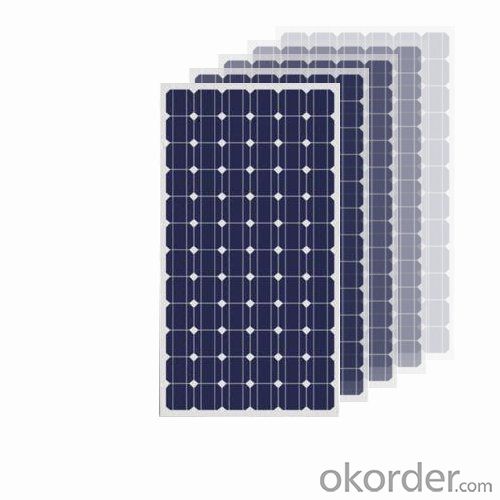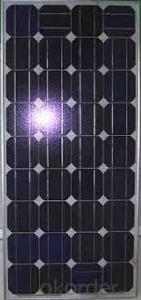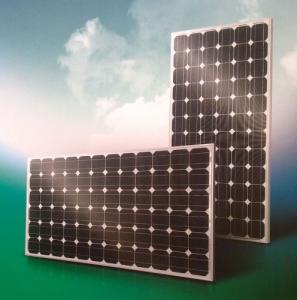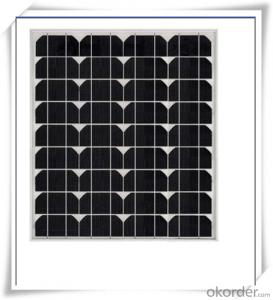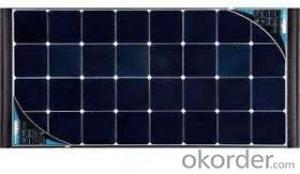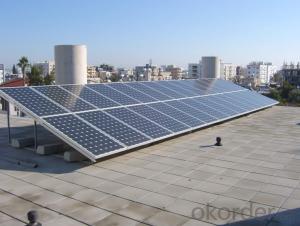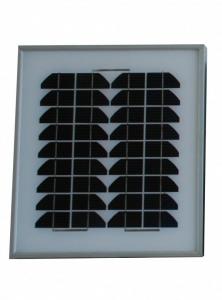Solar Panels Adelaide - CNBM Solar Mono-Crystalline Solar PV Panel 185W
- Loading Port:
- China main port
- Payment Terms:
- TT or LC
- Min Order Qty:
- 100000 watt
- Supply Capability:
- 10000000 watt/month
OKorder Service Pledge
OKorder Financial Service
You Might Also Like
About us
CNBM International Corp, established in 2004, is the business entity for trade and logistic of CNBM Group.With the advantages in Cement, Composite Materials, New Building Materials and Engineering, CNBM mainly concentrate on coal, steel and construction equipments and give priority to solar and wind energy development.CNBM International is highly recognized by its business partners and clients all over the world and has established good business relationship with the customers in over 120 countries and regions all over the world.
Mono-crystalline solar module is the core part of solar power systems, as well as the most important part of the solar system. Mono-crystalline solar module consists of high efficiency crystalline silicon solar cell, super white cloth grain toughened glass, EVA, transparent TPT backboard and the composition of aluminum alloy frame. The function of Mono-crystalline solar module is to convert solar energy into electric energy, or sent to the storage battery, or promote work load. The quality of the solar energy battery components and cost will directly decide the quality and cost of the whole system.
Standard Test Conditions of Polycrystalline Silicon Solar Panel
The opto-electrical specifications shown below are stabilized values being measured at Standard Test Conditions of multicrystalline silicon Solar Panel, Irradiance: 1000W/m2, Spectrum: AM1.5 at 25°C, The info below is subject to manufacturing tolerances. Where appropriate minutes of measurement are available and are used for the dimensioning of the installation.
Advantages of Polycrystalline Silicon Solar Panel
A&M Solar performance guarantees for 25 years
12 years guarantee for workmanship for multicrystalline silicon Solar Panel
Timeliness of delivery
Quality Products certified (TÜV, UL, CE, VDE, ISO)
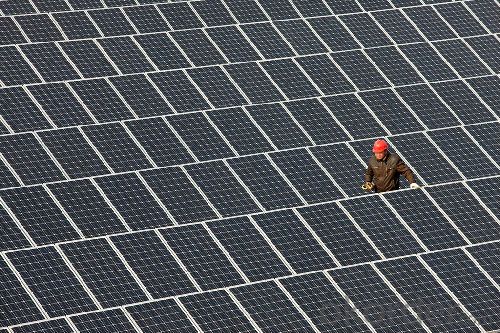
FAQ:
Q1: Why buy Materials & Equipment from OKorder.com?
A: All products offered byOKorder.com are carefully selected from China's most reliable manufacturing enterprises. Through its ISO certifications, OKorder.com adheres to the highest standards and a commitment to supply chain safety and customer satisfaction.
Q2: How do we guarantee the quality of our products?
A: We have established an advanced quality management system which conducts strict quality tests at every step, from raw materials to the final product. At the same time, we provide extensive follow-up service assurances as required.
Q3: How long can we receive the product after purchase?
A: Within three days of placing an order, we will begin production. The specific shipping date is dependent upon international and government factors, but is typically 7 to 10 workdays.
- Q: Can solar panels be used for powering a manufacturing facility?
- Yes, solar panels can be used to power a manufacturing facility. Solar energy can be converted into electricity, which can then be used to power various processes and equipment in a manufacturing facility. This can help reduce reliance on traditional energy sources and promote sustainability. However, the feasibility and capacity of solar power for a manufacturing facility would depend on factors such as the facility's energy requirements, available space for solar panel installation, and local sunlight conditions.
- Q: I'm just geting into electonics and stuff. So I am trying to make a simple USB charger. I'm looking for at least 4 volts output. What I've got is two solar panels (detached) a 4 AA battery holder, and a circuit board with an led on it (took the solar panels out of old lawn lights. I need more charge out of my panels (I think) so I tried attaching them. I soldered the positive wire from one to the positive connection on the other and negative wire to negative connection. After doing so and checking the multimeter, it says I have no output at all. How do you connect them?
- Most solar lamps use a single .2V nicd or nimh battery as a back-up supply, so they should be able to generate at least .5V in full sun to allow charging of the battery (you can verify the voltage of a single panel with your DMM) If you have two of these panels, I wouldn't expect them to make more than approximately 3V. The proper connection would be a series connection where the negative of one panel connects to the positive of the other and the remaining positive and negative wires become the outputs. Try this connection and measure again with your multimeter set to DCV and the panels in full sun. If the voltage is not high enough, add a third panel wired with its positive lead to the remaining negative of the first two. This should bring your voltage up another 50 percent.When you wire the panels positive to positive, negative to negative as you already have, voltage will be that of one panel, but current output will double (more amps) If you have many of these panels, you could combine series and parallel wiring to increase voltage and current.
- Q: Does anyone know how I would go about hooking up the air conditioners in my house to solar panels? I would want just the air conditioners to be powered by solar energy. How could I hook it up where the panels can absorb energy from the sun during the day, and save and store the energy so I can run the air conditioners at night? I really feel that in the long run, this would save a lot of money with the energy bill. It's the use of the air conditioners that drive up the bill. Is this idea feasible? Is it also possible to have some sort of hybrid system where I can switch from solar to my regular local energy source when I want to?
- There are solar air conditioners. They don't use electricity. Most anyway. The number of photovoltaic panels you would need to run a standard electric air conditioner would cover most of the homes on the block. Read about heat pumps, Thermal storage, swamp coolers, solar heating to get an idea of what is practical. Most solar systems are hybrid because of clouds and nightfall. The best solar homes are designed from the ground up. With plenty of insulation, the right size and orientation of windows and collectors. Putting solar on an existing structure is going to be a misfit half donkey job unless you are very lucky.
- Q: Can solar panels be used in conjunction with a backup generator?
- Yes, solar panels can be used in conjunction with a backup generator. This setup, known as a hybrid system, allows the solar panels to generate electricity during the day and excess power can be stored in batteries or fed back into the grid. When there is insufficient sunlight or high energy demand, the backup generator can kick in to provide electricity. This combination ensures a continuous power supply, making it a reliable and sustainable solution.
- Q: How much space is needed to install solar panels?
- The amount of space required to install solar panels depends on various factors such as the type of solar panels, their efficiency, and the energy needs of the property. Generally, a typical rooftop solar panel system requires about 100-400 square feet of space for every kilowatt (kW) of solar panels. Additionally, open areas or ground-mounted systems may require more substantial space. It is recommended to consult with a solar installation professional who can assess the specific requirements based on the location and energy goals.
- Q: How do solar panels affect the property's long-term financial viability?
- Solar panels can significantly enhance the long-term financial viability of a property. By generating clean and renewable energy, solar panels can help reduce electricity bills, providing substantial savings over the life of the system. Moreover, investing in solar panels can increase the property value, making it more attractive to potential buyers and potentially resulting in higher resale prices. Additionally, solar panels can provide a stable and predictable source of electricity, protecting the property from future energy price fluctuations.
- Q: I am looking to buy a solar panel.What does it mean when in the title it says 200 watts, or 50 watts?
- It's okorder / for more details.
- Q: so i told my dad to buy solar panels and he wants to see how much money u can save we pay $00 and i dont want quot;You don't need solar panelshow much would my fmaily save?
- maybe you ought to ask a solar installer in your area. who knows what the electric rates are. and how much electricity you use. and how much sun there is. and what your electric utility's policy is. and what kind of house you have, and how you use electricity. and what appliances (eg stove) you might convert to electric to take advantage of solar panels. wouldn't that seem to be a good idea?
- Q: I have two solar panels and I have measured that they produce V by themselves. I am trying to generate .5V, but whenever I hook them up in parallel I get something like .02V. What it happening?
- Build okorder /
- Q: How do solar panels affect the local economy?
- Solar panels can have a positive impact on the local economy by creating jobs in the installation, manufacturing, and maintenance sectors. Additionally, they can reduce energy costs for both businesses and residents, allowing them to allocate funds for other investments. Furthermore, the use of solar power can attract businesses to the area, stimulating economic growth and development.
Send your message to us
Solar Panels Adelaide - CNBM Solar Mono-Crystalline Solar PV Panel 185W
- Loading Port:
- China main port
- Payment Terms:
- TT or LC
- Min Order Qty:
- 100000 watt
- Supply Capability:
- 10000000 watt/month
OKorder Service Pledge
OKorder Financial Service
Similar products
Hot products
Hot Searches
